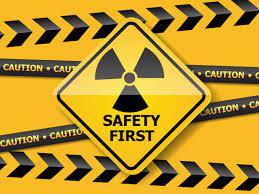Radiation Safety: Guidelines for Protection and Risk Management
Stanley Bangani![]() Invalid date
5 minutes, 20 seconds
Invalid date
5 minutes, 20 seconds
625 views 0 Likes
Introduction:
Radiation is a ubiquitous force in our environment, with various sources such as medical procedures, industrial applications, and natural occurrences. While radiation has many beneficial uses, it also poses potential risks to human health and the environment. Therefore, it is crucial to establish comprehensive radiation safety guidelines for protection and risk management. This blog will delve into the fundamentals of radiation safety, the potential risks associated with radiation exposure, and the strategies and guidelines in place to mitigate these risks.
Understanding Radiation
Radiation is the emission of energy as electromagnetic waves or as moving subatomic particles, such as alpha, beta, and gamma particles. It can be categorized into two main types: ionizing and non-ionizing radiation. Ionizing radiation has enough energy to remove tightly bound electrons from atoms, creating ions. This includes X-rays, gamma rays, and certain particles emitted by radioactive materials. Non-ionizing radiation, on the other hand, lacks the energy to ionize atoms and includes sources like ultraviolet (UV) rays, visible light, and radiofrequency radiation.
Shedding Light on the Potential Health Risks of Radiation Exposure
While some radiation exposure is inevitable in our daily lives, high doses or prolonged exposure to ionizing radiation can have adverse health effects. These effects may include:
Acute Radiation Syndrome (ARS): ARS occurs when the body receives a high dose of ionizing radiation over a short period, leading to symptoms such as nausea, vomiting, diarrhea, and in severe cases, organ failure and death. Cancer: Long-term exposure to ionizing radiation increases the risk of developing cancer, as it can damage DNA and lead to mutations in cells. Chronic Health Effects: Prolonged exposure to lower levels of ionizing radiation may result in chronic health conditions, such as cataracts, cardiovascular disease, and thyroid disorders.
Birth Defects: Radiation exposure during pregnancy can harm the developing fetus, leading to birth defects or developmental issues.
Radiation Safety Guidelines and Risk Management
To protect individuals and the environment from the potential risks associated with radiation exposure, stringent guidelines and risk management strategies are in place. Here are some key principles and practices:
ALARA Principle: ALARA stands for "As Low As Reasonably Achievable." This principle emphasizes that radiation exposure should be minimized to the lowest possible level, taking into account technological and economic factors. This approach helps prevent unnecessary exposure to ionizing radiation.
Dosimetry: Dosimeters are devices that measure radiation exposure. They are essential for monitoring radiation workers' exposure levels and ensuring they stay within safe limits.
Radiation Shielding: Depending on the type and energy of radiation, appropriate shielding materials can be used to reduce exposure. For example, lead is often used to shield against gamma rays and X-rays.
Time, Distance, and Shielding: These three factors are crucial for minimizing radiation exposure. Reducing the time spent near a radiation source, increasing the distance from the source, and using appropriate shielding can significantly reduce exposure.
Radiation Safety Training: Individuals working with radiation sources must receive proper training on radiation safety protocols, including the use of personal protective equipment (PPE) and handling radioactive materials safely. Regulations and Standards: Governments and international organizations establish regulations and standards to ensure radiation safety. Compliance with these guidelines is essential to protect both workers and the public.
Emergency Response Plans: Facilities that use or produce ionizing radiation must have well-defined emergency response plans in case of accidents or incidents involving radiation.
Conclusion
Radiation safety is paramount in protecting human health and the environment from the potential risks associated with radiation exposure. By understanding the principles of radiation safety, adhering to strict guidelines, and implementing effective risk management strategies, we can harness the benefits of radiation while minimizing its potential harm. It is a collective responsibility to ensure that radiation is used safely and responsibly in various industries and applications, safeguarding our present and future generations from its adverse effects.
image source:https://www.istockphoto.com/photos/radiation-safety

